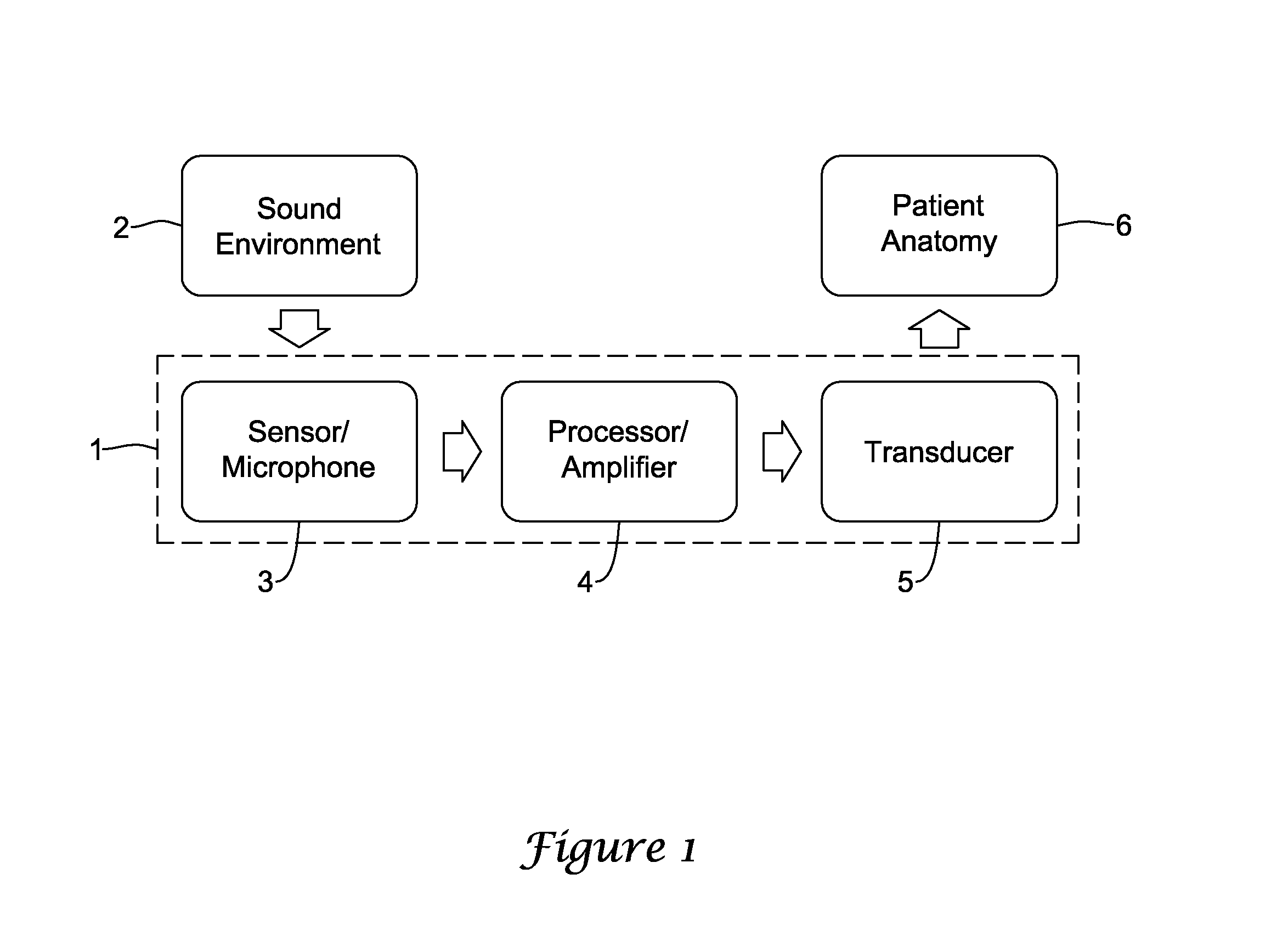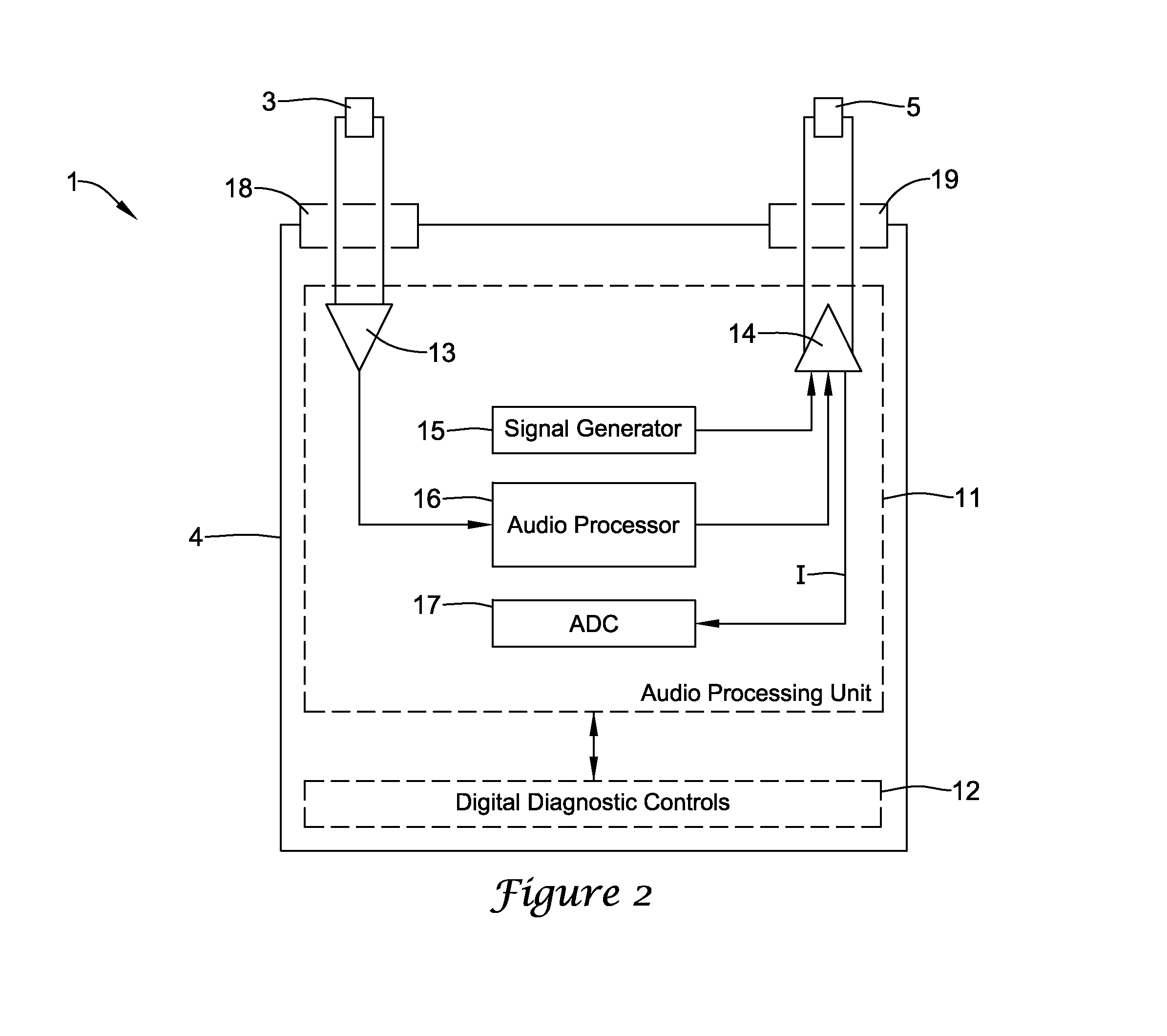Transducer impedance measurement for hearing aid
a technology of impedance measurement and hearing aid, which is applied in the field of hearing aids, can solve the problems of limiting the efficacy of the device, overly conservative device settings, and err on the side of the manufacturer or clinician
- Summary
- Abstract
- Description
- Claims
- Application Information
AI Technical Summary
Benefits of technology
Problems solved by technology
Method used
Image
Examples
Embodiment Construction
[0020]For the purposes of this document, the term “hearing aid” is intended to mean any instrument or device designed for or represented as aiding, improving or compensating for defective human hearing and any parts, attachments or accessories of such an instrument or device.
[0021]A hearing aid is disclosed, which, in a test mode, can determine the impedance of the transducer that stimulates the anatomy of the patient. Impedance may be determined by simultaneous determination of the current flowing through the transducer and the voltage across the transducer. In some cases, the output amplifier of the hearing aid includes two outputs, with one being a scaled and / or summed replica of the other. The amplifier is driven with a periodic signal with a particular frequency and a known peak voltage. The periodic signal may be sinusoidal. The primary output of the amplifier is electrically connected to the transducer, with a known voltage given by the peak input voltage and a known gain of ...
PUM
 Login to View More
Login to View More Abstract
Description
Claims
Application Information
 Login to View More
Login to View More - R&D
- Intellectual Property
- Life Sciences
- Materials
- Tech Scout
- Unparalleled Data Quality
- Higher Quality Content
- 60% Fewer Hallucinations
Browse by: Latest US Patents, China's latest patents, Technical Efficacy Thesaurus, Application Domain, Technology Topic, Popular Technical Reports.
© 2025 PatSnap. All rights reserved.Legal|Privacy policy|Modern Slavery Act Transparency Statement|Sitemap|About US| Contact US: help@patsnap.com



